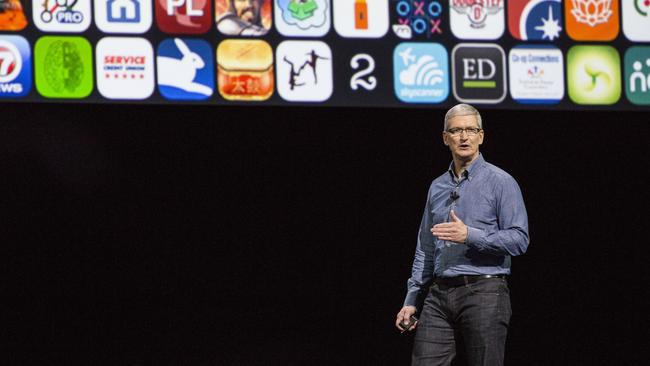Apple boosts Siri voice recognition powers
Apple has helped usher in a new age of personal computing where we spend more time talking with devices.

Apple yesterday helped usher in a new age of personal computing where we spend a comparable time talking with devices as we do using keyboards.
At its Worldwide Developers Conference in San Francisco it announced the transformation of its personal assistant Siri from a service that tells you the weather, sets alarms and performs dictation to a service you continually interact with to complete tasks.
Siri will be available on Macs as wells as iPhones and iPads. Further, Apple’s 13 million registered developers can soon incorporate Siri into any application.
So you’ll be able to order pizza using voice commands, ask when the next train is due, or ask Siri how to make eggs benedict if developers of those apps use it.
In the renamed macOS operating system for MacBooks, Apple has implemented a form of intelligent searching with Siri where you specify a document by its attributes. So you could ask Siri to find particular documents and include “just the ones Ken sent me that I tagged as a graph”.
You could ask Siri on a Mac to create and send messages and ask it to find the movies playing tonight. On an iPhone, Siri will work with chat applications such as WeChat, WhatsApp and Slack and you can phrase your request in a variety of ways. For example, you could tell Siri: “WeChat Nancy I’ll be five minutes late” or “Tell Nancy on WeChat that I’ll be five minutes late”.
All this is possible due to more accurate voice recognition and natural language capabilities that make fluent interactions possible.
Siri will soon send messages and initiate voice calls in cars using Apple CarPlay. You can drag documents that Siri finds into applications, such as images straight into a Pages document.
At its keynote yesterday, Apple announced changes to the four operating systems it curates. There’s now iOS10 for iPhone/iPad, the renamed macOS Sierra for MacBooks, and watchOS 3 and tvOS 3 for Apple Watch and Apple TV.
Developer versions of the new operating systems are available now, Beta versions come next month, with final consumer versions in the Australian spring.
Maps and music were among a list of updated software. There was no announcements of new hardware, no new MacBooks, which had received upgrades at previous WWDCs.
Apple responded to Windows’ Hello feature, which lets users log in to their device using face and fingerprint recognition, with a feature of its own. With auto lock, you’ll be able to log in to, say, a Mac, by tapping an Apple Watch that’s already authenticated, or by using fingerprint recognition on a wirelessly connected iPhone.
This connectivity feature is used elsewhere. Apple announced a universal clipboard that lets you copy information, say, on a phone and then immediately paste it into a document on a wirelessly connected Mac.
Users can specify how long documents are retained on a Mac through a new optimised storage feature that will automatically make room for new files by deleting older ones. And they can make payments with Apple Pay on the web and confirm them using touch ID on a phone.
Apple has responded to the challenge mounted by Google Photos with features such as automatic object and scene recognition as well as face recognition in photo collections.
In Apple Maps, you can select not only restaurants in an area but narrow the choice to, say, “seafood restaurants”. And Apple Music has been revamped with a cleaner user interface.
Apple talked up the success of its News app, which now hosts more than 2000 publications and has 60 million readers. There is now a “for you” feature with top stories, trends and topics you follow, and access to publications such as The Wall Street Journal via subscriptions.
Chris Griffith travelled to Apple’s Worldwide Developers Conference in San Francisco courtesy of Apple.


